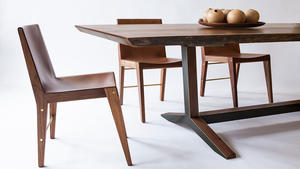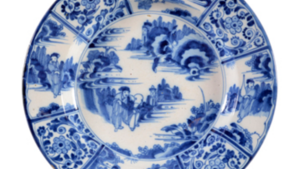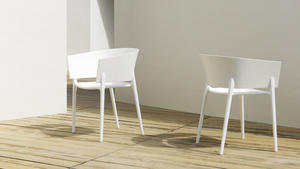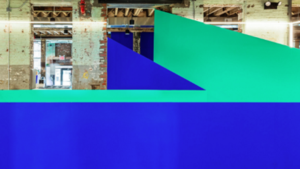Textiles, ceramics and metals: These alternative materials were the very tools that helped enable women in the 1950s and ’60s to become “powerful, successful, even dominant” artists and designers, explained director Glenn Adamson in his opening remarks at the Museum of Art and Design’s “Pathmakers: Women in Art, Craft and Design, Midcentury and Today” exhibit launch on April 27.
Toshiko Takaezu's Vase Form (1964) and a portrait of the artist
While men were dominating the painting, architecture and sculpture realms of the mid-century, women like Marianne Strengell, whose vibrant “Forecast Rug” for Alcoa is composed of aluminum thread and wool, and Dorothy Liebes, whose "Prototype Theatre Curtain," made of Dupont Orlon and Fairtex metallic yarn, was commissioned for the 1964 New York World’s Fair, were blazing the path for today’s female artists. Their evolution mirrored that of the Museum of Arts and Design, which became the hub of the then-burgeoning American modern craft movement after being established in 1956.
Left: "Prototype Theatre Curtain" for DuPont Pavilion, New York World's Fair 1964, by Dorothy Liebes; Right: Hella Jongerius' "Knots and Beads Curtain"
Their mid-century legacy lives on, reflected in pieces like Hella Jongerius’ “Knots & Beads Curtain,” a hand-knotted cotton rope-and-porcelain bead curtain designed for the United Nations Delegates’ Lounge. Over 100 pieces from a select group of leaders including Karen Karnes, Dorothy Liebes, Lenore Tawney, Sheila Hicks, Alice Kagawa Parrott, Eva Zeisel, Toshiko Takaezu and Gabriel A. Maher, are on display at MAD until September 27, 2015.




























